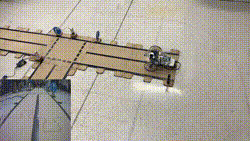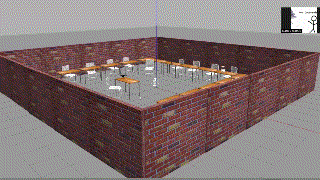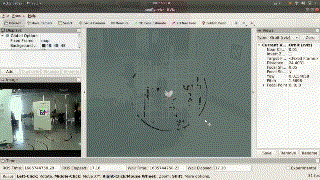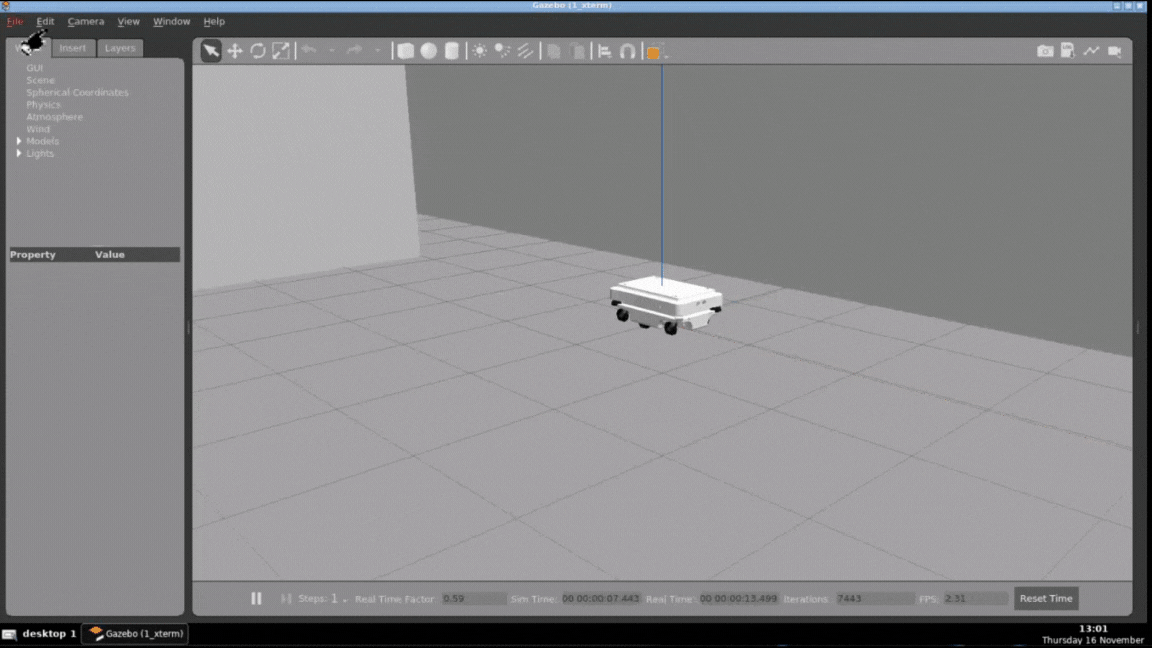
Nancy Lesly García Jiménez
Robotics and Digital Systems Engineer with Cyber-Physical Systems minor


Robotics projects



Automation of a Mobile Differential Robot in a Controlled Circuit.
For a period of ten weeks, we teamed up with Manchester Robotics to automate a Puzzlebot. This involved integrating the Hacker Board, a design by Manchester Robotics, and utilizing an NVIDIA Jetson Nano as a powerful computational hub for the robot's sensors and actuators. Using concepts as mobile differential robot kinematics, artificial intelligence, control and computational vision, an algorithm was implemented on the ROS (Robot Operating System) environment, to perform the action of autonomous driving respecting traffic common regulations, such as roads, and traffic lights, also a convolutional neural network was implemented to detect 4 different signals (stop, turn right, turn left, keep direction).

Pick & Place Action in a Collaborative Robot.
The xArm 6 falls under the category of a six-joint articulated arm. This gripper-type manipulator is designed to grasp objects within its jaws. The project aimed to familiarize with inverse and forward kinematics, basic dynamics, in-depth study of ROS, covering fundamental ecosystem concepts, and practical application using the MoveIt! framework for robot manipulation, the 3D simulator RViz, and mechanical modeling in URDF. A solution to the pick & place action was designed and implemented virtually, in which the manipulator follows a trajectory to an object and performs the action of picking it up with the effector, followed by the last trajectory to the final goal.



Integration of a Kalman Filter into SLAM for enhanced navigation in the university's rescue robot, KAUIL.
At the beginning of the project, KAUIL had a functional radio control system and some ROS nodes to manipulate the camera positions. But several electronic components, including the LiDAR sensor, robotic arm, encoders, air quality sensor, IMU sensors, and central camera, were identified as either unused at the software level or not connected. After addressing mechanical and electrical repairs to obtain encoder feedback for ROS, and ensuring reality matched simulation, work proceeded with IP cameras and Hokuyo to implement reactive navigation algorithms. The Extended Kalman Filter with map-based localization was also employed for precise robot positioning in Kauil's challenging environment, showcasing accuracy despite encoder limitations and terrain vibrations.


CAN protocol for the manipulation of an Actuator (To open a Tractor Hood)
In this prototype an embedded system was designed for implementation in John Deer's tractors, enabling the manipulation of the tractor hood. This functionality allows the hood to be opened and closed from the cabin, aiming to streamline the work for farmers during their daily tasks.
In this project Arduino IoT Cloud was employed to monitor the real-time status of the tractor hood remotely. Simultaneously, the system communicates via CAN protocol between the utilized microcontrollers (Arduino Mega and NodeMCU ESP8266). Progressive testing was conducted, connecting the ESP8266 to the internet and establishing a connection with the Arduino Cloud. Two widgets were integrated into the utilized dashboard: a button for remote tractor hood control and a status display reflecting its physical state. Ultimately, FreeRTOS was utilized to script control for the servo motor, encompassing CAN communication and error validation.

Dashboard in Docker for a mobile cyber-physical systeminterconnected with Long Range sensors.
The activities of this project included:
-
Long Range communications protocol implemented in actual LoRa transceivers that aim to transmit low-frequency data between them.
-
Randomly generate data (Synthetic data) using consistent values from a previous research of variables of interest and real-time readings for a simple sensor station to simulate real data.
-
The design of a HMI that can showcase a dashboard of selected variables, implemented in InfluxDB. (TCP based). For a visualization of data in real-time. Variables sucha as:
-
Weather variables as Temperature and Humidity
-
An Alarm (Interruption)
-
Distance from an object
-
GPS position
-
IMU information
-
Speed of the vehicle
-
Fuel level
-


C++ GUI for a mobile robot Gazebo simulation
Design considerations:
-
The GUI application functions as a ROS node, using subscribers, publishers and services to communicate with other nodes, and then displays data on the user's screen with the help of a graphical user interface library using OpenCV and CVUI.
-
Robot Info Node provides relevant information about the robot, such as the robot name and the current status of its systems.
-
Distance Tracker Service node: this node subscribes to a nav_msgs/Odometry topic, calculates the distance traveled by the robot using the odometry data, and provides a service server of type std_srvs/Trigger to send a message with the distance traveled on request. The service name is /get_distance.
Digital twin used in a virtual reality and augmented reality proposal.

Home Assistant dashboard for a cyber-physical system.

Prototype for assessing the condition of the tooling used to engrave screw head figures, achieved through a 2-class convolutional neural network classifier.



Gazebo simulation from CAD files

VGA PONG
(FPGA in VHDL implementation)



This project involved designing and implementing a Ping Pong game using VHDL on an FPGA, specifically focusing on VGA signal generation and object animation. Using the top-down design methodology, we broke down the system into modular components such as counters, VGA controllers, synchronization signals, and RGB signal generators. The horizontal and vertical synchronization was achieved using state machines and pixel counters, and the animation logic for the paddles and the ball was written in a behavioral way. Collision detection and score tracking were implemented and displayed on 7-segment displays. The entire design was synthesized and tested on an FPGA development board, demonstrating real-time graphics output and interactivity.
Python Infotainment System.
An embedded system inspired by digital car screens was designed and implemented. It features an interface that runs various multimedia applications on a Raspberry Pi, controlling different sensors and actuators with FreeRTOS. Kivy was used for the interface design
QUICK ID
Phone
+525534273823
Website
Address
Cuautitlán Izcalli, Edo. Mex.